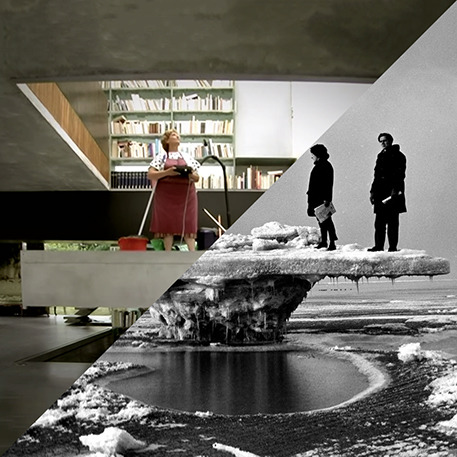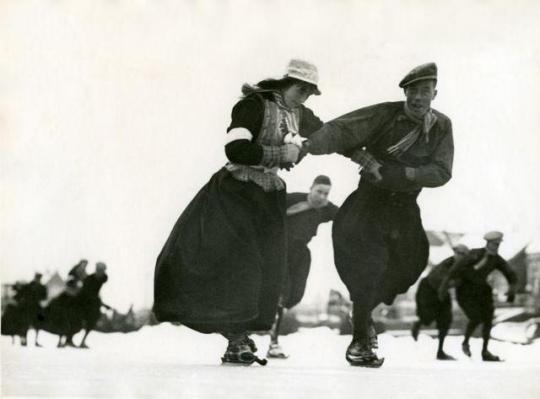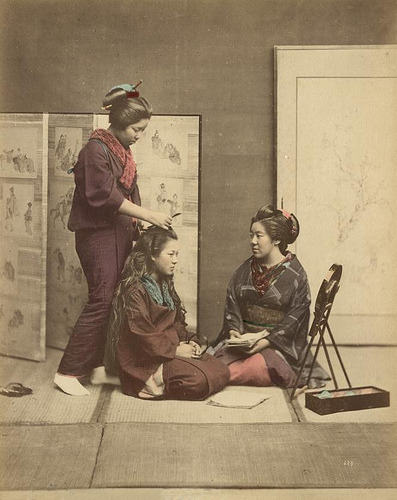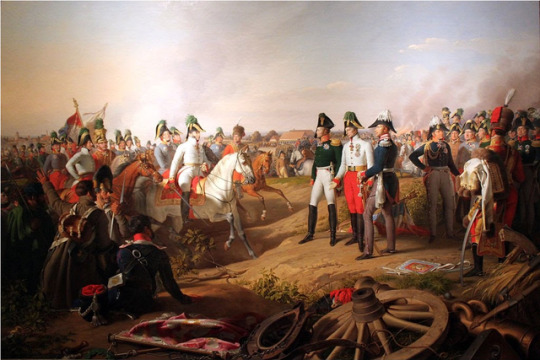#Nationaal Archief / Spaarnestad Photo
Text

Dutch boy with a pillow strapped on his backside in order to soften the falling on ice while skating, Netherlands, 1933 - Nationaal Archief / Spaarnestad Photo
155 notes
·
View notes
Text

Boy takes a deep breath to blow out a candle
Walter Blum Nationaal Archief Spaarnestad Photo
45 notes
·
View notes
Photo

Nationaal Archief / Spaarnestad Photo / Anefo / Eric Koch
11 notes
·
View notes
Photo

Japanse schrijfmachine, 1938 [Collectie SPAARNESTAD PHOTO/Het Leven, Nationaal Archief, Den Haag]
153 notes
·
View notes
Photo

A man runs alongside King George V's coach to ask for spare change, England, c. 1920
Photo credit: Nationaal Archief/Collectie Spaarnestad/Fotograaf onbekend
36 notes
·
View notes
Photo

Ila Bêka and Louise Lemoine, Koolhaas Houselife, 2008
VS
Ice-table: ebb-tide at a Dutch beach, 1963 © Nationaal Archief | Spaarnestad Photo | Anefo
#Ila Bêka#Louise Lemoine#Koolhaas Houselife#Rem Koolhaas#oma#architecture#bordeaux#maison à bordeaux#ice table#ebb tide#Dutch#netherlands#collage#collage art#cut and paste
24 notes
·
View notes
Photo

Schaatsen in klederdracht / Skating in traditional costume Nationaal Archief / Spaarnestad Photo, SFA002002733
26 notes
·
View notes
Photo

Woman styling the hair of a woman sitting on a tatami, while a third woman is watching. Photo of a series of 42 hand coloured albumine prints at Spaarnestad Photo (Het Leven) by Felice Beato, Kusakabe Kimbei or Raimund baron von Stillfried. Japan, ca. 1880 / source: Nationaal Archief
#1880's#vintage photography#hand colored#hand coloured#felice beato#kusakabe kimbei#raimund baron von stillfried#japan#japanese#woman#hairdo#hair style#doing her hair#tatami#geisha#mirror#tatami mat#hair styling#traditional clothes
10 notes
·
View notes
Text
When body cams had bullets
Just as GoPros have given us a whole new perspective on everything from extreme sports to animal behavior, so have body-worn cameras offered new insights into policing. Law enforcement agencies around the world now use body cams to record the activities of officers in the field, though they've only become commonplace in the last few years. But the idea of documenting the volatile situations officers can find themselves in -- providing both evidence against offenders and holding police accountable for their actions -- is much, much older. The first attempts were very different from the body cams of today, however, as releasing the shutter required pulling the trigger of the gun the camera was attached to.
A World War II-era Japanese machine gun camera
The relationship between camera and gun goes all the way back to before World War I. So as not to waste ammo and put pilots in unnecessary danger, guns were modified to shoot pictures instead of bullets when the trigger was squeezed. In this way, gunners could be trained with equipment that looked and felt familiar, while their accuracy could be assessed through the resulting photos. This practice persisted through World War II, at which point it also became common to add cameras to live aircraft guns. The footage was a record of how many planes the gunner had downed, the damage done to infrastructure... that sort of thing. If you've ever watched a World War II documentary, you've probably seen clips of this grainy footage yourself.
The inner workings of the barrel-mounted movie camera (1935)
Nationaal Archief / Spaarnestad Photo / Het Leven
In the mid-1930s, someone transplanted this concept to the handgun. The earliest record of such a marriage is from a Universal Newsreel filmed in Los Angeles in 1935. The footage features the demonstration of a small camera mounted beneath the barrel of a revolver, which recorded video of the gun's line of sight from the moment the trigger was first squeezed until its release. Crucially, this version didn't require the operator to depress the trigger to the point of firing a bullet in order to get the film reel rolling. Other than an article on it appearing in the February 1938 edition of Modern Mechanix, little else is known about the revolver camera, including who developed it.
From the February 1938 edition of Modern Mechanix
Perhaps it inspired Abraham Kurnick of New York City, however, who created a similar attachment in 1938. His version was, on the one hand, much more graceful -- the small still camera could be easily fitted to any Colt 38 service revolver, adding 170 grams (6 ounces) to the weight of the gun. On the other hand, taking a picture and firing a bullet were inextricably linked. The miniature roll of film the camera was loaded with was good for six exposures; one for each bullet. As an article in the August 1938 edition of Popular Science explains, "the camera enables an officer to photograph a criminal in case a shot misses."
Abraham Kurnick's stills camera
There's no evidence to suggest either of these revolver cameras were ever procured by law enforcement agencies or made it into circulation by other means. And the idea of wedding gun and camera has failed to catch on even now, at least in any official capacity. There are many, many products of this kind available to regular consumers, such as digital scopes with recording capabilities. But a cop with a camera attached to his service pistol is a rare sight indeed.
Nationaal Archief / Spaarnestad Photo / Het Leven
In recent history, several companies have tried to sell pistol-mounted cameras to law enforcement. Their purpose being exactly the same as it was in the 1930s: Evidence and accountability. Just over a decade ago, for example, it was Legend Technologies and the PistolCam. In the last few years, it's been Centinel Solutions and the Shield Camera. Axon (formerly Taser) also has an optional camera attachment for some of its non-lethal taser weapons. Handfuls of these product were and still are used, mainly by small, specialist units, but they're nowhere near as prolific as the body cams now routinely employed by law enforcement agencies across the world.
There are several, common sense reasons as to why you would want to decouple camera and firearm. For one, by the time a gun is drawn, you've missed your chance to capture whatever led to the situation escalating to that point. Also, there are scenarios in which footage would be valuable despite an officer not needing to draw their gun at all. Body cams aren't a perfect solution, of course. Wearers are responsible for turning them on, for a start (though Axon is somewhat addressing that with an automated system), and there are cases where footage has been faked or otherwise tampered with after the fact.
There are also legitimate worries body cams could be used in the future for continuous surveillance, as if we needed any more of that in our lives already. But at least they're a better option than the 1930s cameras that took the idea of shooting on film perhaps a little too literally.
Images: Revolver camera photos via the Dutch National Archives (Nationaal Archief / Spaarnestad Photo / Het Leven); WWII-era Japanese gun camera via eBay; Modern cop body cam via David McNew / Getty Images.
Technological innovation didn't begin with the development of the first integrated circuit in the 1950s. Backlog is a series exploring the era of possibilities: engineering feats that followed the industrial revolution, quirky concepts the future's rendered obsolete, and inventions that paved the way for some of the technology we use today.
- Repost from: engadget Post
0 notes
Text

Dutch skater in traditional costume, The Netherlands, 1933 - Nationaal Archief / Spaarnestad Photo
101 notes
·
View notes
Video
Lonely man smoking in hotel by Nationaal Archief
Via Flickr: National Archive/Spaarnestad Photo/Wiel van der Randen The Netherlands, The Hague, Hotel Des Indes, [1936]
1 note
·
View note
Photo

Het Nationaal Archief beheert en presenteert bijna 1000 jaar geschiedenis van Nederland in 125 kilometer archiefmateriaal, 15 miljoen foto’s en 300.000 kaarten. In de tentoonstelling ‘Het geheugenpaleis – met je hoofd in de archieven’ presenteert het Nationaal Archief op vernieuwende wijze enkele bijzondere items uit de archiefcollectie. Door middel van elf verhalen worden bezoekers meegenomen op een reis langs de Nederlandse geschiedenis. Voor meer informatie: zie www.gahetna.nl.
The Nationaal Archief (NA) is the national archive of the Netherlands, located in The Hague. It houses collections for the central government, the province of Zuid-Holland, and the former County of Holland. There is also material from private institutions and individuals with an association to the Dutch government or the political or social history of the Netherlands. The Nationaal Archief holds the Archives of the Dutch East India Company from 1602–1811, which were, along with related records held by South Africa, India, Sri Lanka, and Indonesia, inscribed on UNESCO’s Memory of the World Programme Register in 2003 in recognition of their historical value.[1] Recently, the photographic archives of Spaarnestad Photo were included in the Nationaal Archief.[2] It has been announced that Wikipedia will get user rights over a large number of photos from these archives.
var quads_screen_width = document.body.clientWidth; if ( quads_screen_width >= 1140 ) { /* desktop monitors */ document.write('<ins class="adsbygoogle" style="display:inline-block;width:468px;height:60px;" data-ad-client="pub-9117077712236756" data-ad-slot="9839843423" >'); (adsbygoogle = window.adsbygoogle || []).push({}); }if ( quads_screen_width >= 1024 && quads_screen_width < 1140 ) { /* tablet landscape */ document.write('<ins class="adsbygoogle" style="display:inline-block;width:468px;height:60px;" data-ad-client="pub-9117077712236756" data-ad-slot="9839843423" >'); (adsbygoogle = window.adsbygoogle || []).push({}); }if ( quads_screen_width >= 768 && quads_screen_width < 1024 ) { /* tablet portrait */ document.write('<ins class="adsbygoogle" style="display:inline-block;width:468px;height:60px;" data-ad-client="pub-9117077712236756" data-ad-slot="9839843423" >'); (adsbygoogle = window.adsbygoogle || []).push({}); }if ( quads_screen_width < 768 ) { /* phone */ document.write('<ins class="adsbygoogle" style="display:inline-block;width:468px;height:60px;" data-ad-client="pub-9117077712236756" data-ad-slot="9839843423" >'); (adsbygoogle = window.adsbygoogle || []).push({}); }
The Netherlands Antilles had a separate Nationaal Archief, which was dissolved when the dissolution of the Netherlands Antilles took place.
The logos on the windows of the same building as the National Archives, showing RKD, LM, NMI and the KB.
The entrance links to a walkway leading to the sister organizations housed in the same building. The large complex comprises a large apparatus to keep documents stored in optimum conditions, which the NA maintains (with government subsidies) for its sister organizations.
National Archives of The Netherlands Den Haag, Netherlands was originally published on HiSoUR Art Collection
0 notes
Photo

Japanse karakters, 1938 [Collectie SPAARNESTAD PHOTO/Het Leven, Nationaal Archief, Den Haag]
127 notes
·
View notes
Photo

Fishermen on a boat. [Photograph, a hand coloured albumine print, from a series of 42 prints at Spaarnestad. Photo by Felice Beato, Kusakabe Kimbei or Raimund baron von Stillfried. Japan, around 1870-1890.] Nationaal Archief / Het Leven - source: Nationaal Archief
#boat#fishermen#hand painted#vintage photography#waterscape#unknown photographer#1870's#1880's#1890's#sail#japan#japanese postcard#japanese
12 notes
·
View notes
